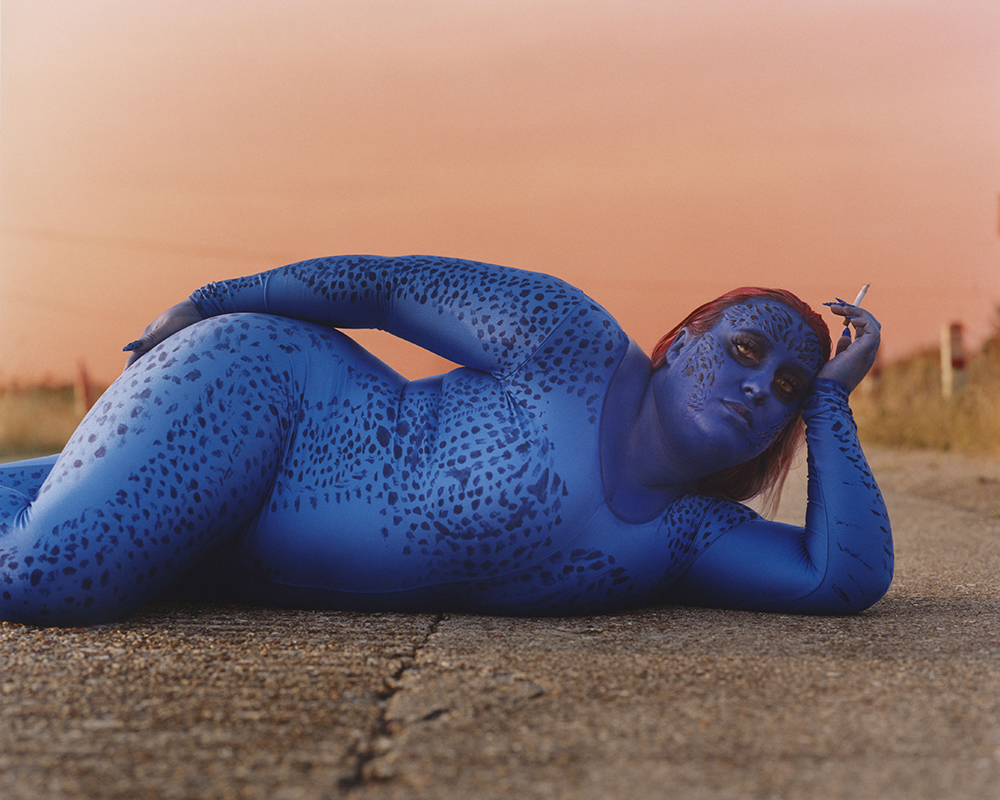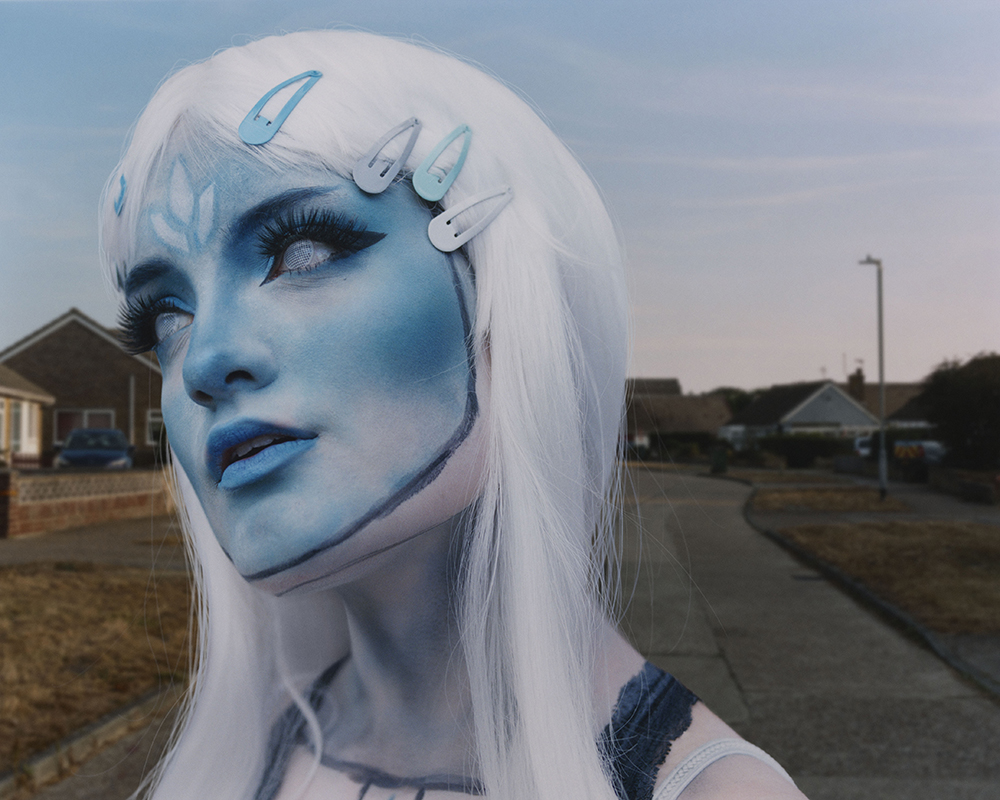
Images courtesy of Thurstan Redding
What is fashion if not sartorial escapism? London-based photographer Thurstan Redding takes the question further with his exploration of the expansive cosplay community in his debut book, Kids of Cosplay. Unexpectedly shot outside of Comic-Con, the introspective look into the world of cosplayers sees fashion as a full form of expressing one’s inner child rather than a safe, expected presentation. Juxtaposing the shrouded mystery of the community with the mundane reality of suburban life, Redding worked with collaborators Finlay Macaulay, Jean-Baptiste Talbourdet-Napoleone, and Lolita Jacobs on casting and art direction, respectively. The result is a visual celebration that took Redding worldwide for a glimpse into the vast craftsmanship and artistry of cosplay. Redding speaks with Models.com about the process of creating Kids of Cosplay, how essential the element of ‘play’ is, and getting rejected by Daenerys Targaryen.
What is it about the cosplay community that captivated you and were you always interested?
Cosplay was something I only became very interested in not long before starting the project. I was in Los Angeles on an assignment when I first saw a cosplayer in the street. I was aware of it as a subculture but had never really engaged with it. I was so intrigued, and when I saw another cosplayer on the DLR in London – dressed as Rick from Rick & Morty – I felt it really could become the focus of the book. As a community, my interest in it came initially from the fact that it still feels incredibly esoteric, despite being huge in scale. It’s almost like this global phenomenon that is happening without us really seeing it.
Where did you go to source cosplayers for this project?
The casting director Finlay Macaulay and I would go to Comic-Con in London and would approach dozens of cosplayers to ask for their contact details. Out of the handful who would give them to us, another handful would reply, and then another handful of those would actually turn up to the shoots. We basically repeated this process to cast the book, which is one of the reasons it ended up being quite time-consuming. We ended up with about 60 cosplayers in the end.

Images courtesy of Thurstan Redding
In terms of fashion and costume design, what impressed you most from your subjects?
I think the attention to detail is really impressive. I remember meeting a Daenerys Targaryen [cosplayer] from Game of Thrones who had an egg covered in real gold leaf. I was very keen to include her in the book but she sadly refused! This attention to detail is something cosplayers really carry through their work. I also love how costumes are things that they tweak and re-use. It feels like a real love of craftsmanship and the idea that something can be slowly improved over time.
How did you decide upon the contrasted location backgrounds as a framework for the cosplayers?
I initially shot the book from a purely documentary perspective but I found that it felt a little out of balance with the cosplayers. I think I also realized that something I found so striking is the existence of the cosplayers in such liminal and suburban spaces. That contrast was something I really wanted to translate, and I felt that I had lost that element by approaching it strictly in a documentary manner.

Images courtesy of Thurstan Redding
How long was your process of selecting final images and what common thread was essential to convey?
The selection of final images went quite fast, surprisingly. I think this was because all of the images were pre-drawn and sketched out, so once they were realized it was easy to select. A lot of people have said to me that the images feel very melancholic; this isn’t something I explicitly thought I was conveying, but looking back at it now I’m very glad that seems to feel like a common thread throughout the imagery.
When looking at your trajectory as an artist, what is something you would have wanted to tell your younger self?
Ah, this is such a tough question! I like to think that regrets are a huge waste of time, but I would definitely tell my younger self to just take my time.

Images courtesy of Thurstan Redding
How did collaborators like Jean Baptiste Talbourdet-Napoleone & Lolita Jacobs aid your creative process?
The art direction they brought was so instrumental in really translating the spirit of cosplay in a visual way when approaching the book. They came up with the idea of paying tribute to the bright colors of cosplay (which is why the book is purple and mint, with hints of acid yellow) and juxtaposing that with a minimal layout. I hadn’t even thought about how the book would look because I was so focused on the imagery, but having their eye really allowed the project to come together and feel coherent as an ensemble.
What do you want audiences to feel when they see these images?
This has been so interesting to me. As I mentioned, it really seems like the main feeling they have provoked is melancholia. Part of me thinks this is maybe because the project confronts people with the fact that they have let go of this element of ‘play’ and dressing up that cosplayers embrace so freely. I certainly felt a sense of melancholia for my younger self when shooting the project – how the act of simply embodying a superhero could be so fun. I think that is something I’m very happy for the viewers to take with them.

